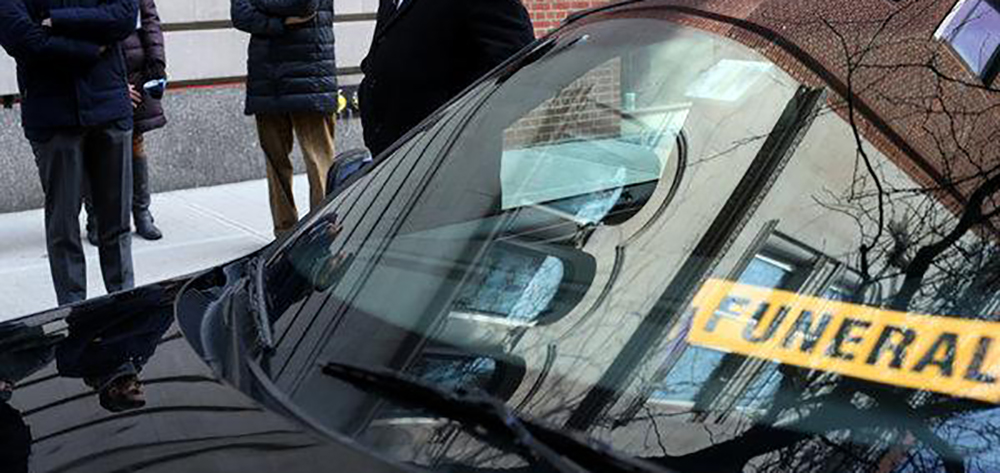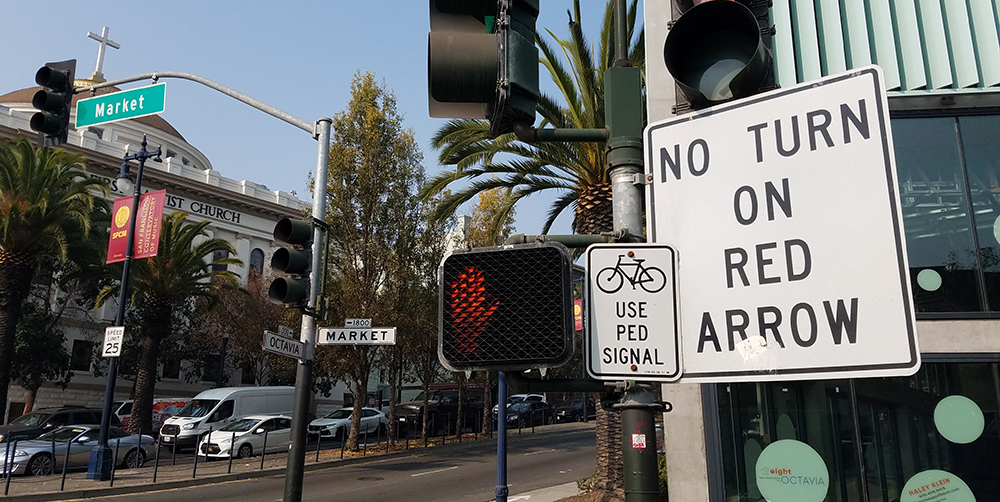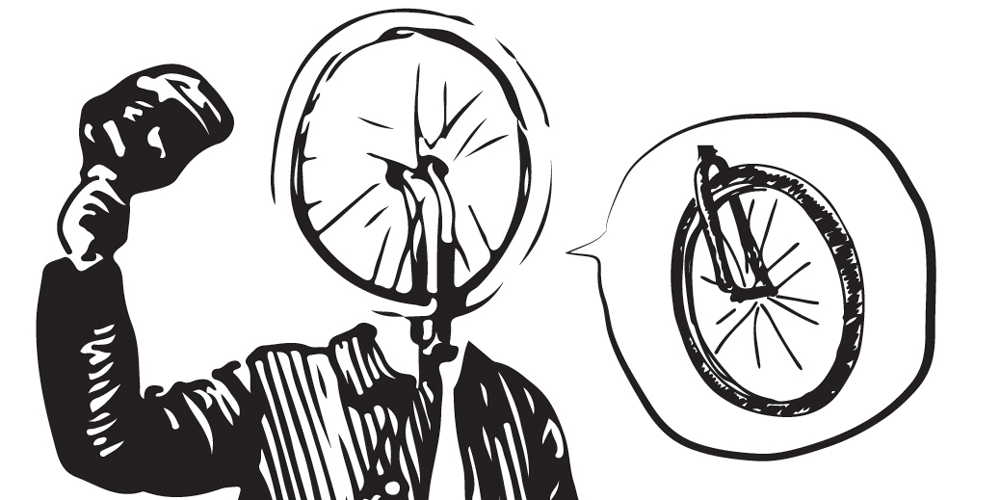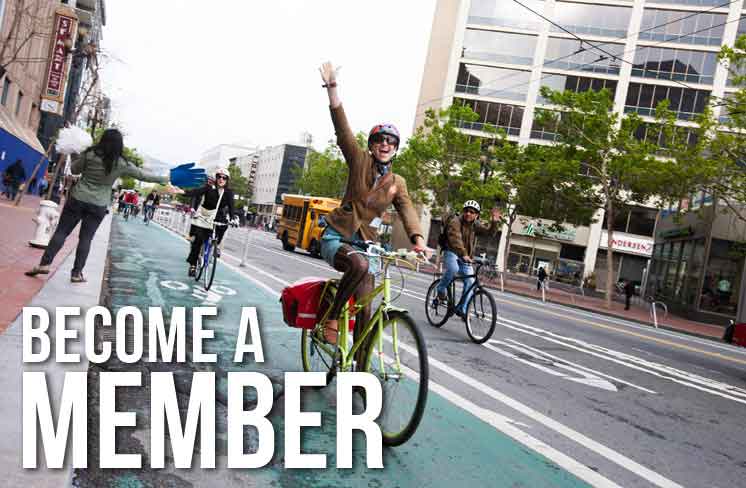Wheel Talk for Wheel People is a monthly advice column written by Christopher White, our adult education program coordinator. Though bikes, biking and getting around SF are our areas of expertise, feel free to ask anything! To submit your questions, please click here.
Wheel Talk, recently I was participating in a funeral procession, heading to the cemetery. I had never done this before, but I was glad to see that most people we passed were very respectful. The procession was accompanied by motorcycle escorts controlling traffic at intersections. At one intersection, a woman on a bicycle stopped, just like cars had. But then she seemed to get impatient and sped through the intersection, even though the motorcycle escort was instructing her not to. We weren’t moving very fast, but we would have hit her if I hadn’t exclaimed to my partner, who was driving. What is the law in this situation? —Not a Pallbearer but Still Appalled
Dear Still Appalled: First, I’m sorry for your (or your partner’s) loss. Your note reminds me that streets are our most activated civic spaces. They can operate effectively only to the extent that we all uphold our social contract with each other. We must give deference to others who require additional consideration because they’re particularly vulnerable — such as pedestrians, people with disabilities, and, yes, people biking — or because exceptional circumstances dictate it. In giving that deference, we may even need to slightly inconvenience ourselves.
A funeral is certainly one such exceptional circumstance. This isn’t a matter of opinion: California Vehicle Code (CVC) backs it up, stating that anyone who ignores the instruction of someone controlling traffic for a funeral procession is committing an infraction (CVC §2817). The California DMV’s Driver Handbook also states clearly that funeral processions have the right of way at all times. And, according to CVC 21200, a person on a bike “has all the rights and is subject to all the provisions applicable to the driver of a vehicle.”

In California, funeral processions have the right of way.
Society as a whole is undoubtedly served by a cultural norm that gives space to those experiencing the death of a loved one. Similarly, we benefit from civil streets where people driving cars defer to the safety of people on foot, in wheelchairs, or on bikes. It’s all part of the same social contract. Everyone, including people on bikes, should yield the right of way to funeral processions. Creating respectful, and therefore safer, streets demands everyone’s participation.
So how do you recognize a funeral? According to Hugh Harrell, a professional motorcycle escort for funerals, “Our motorcycles will have flashing lights (strobes) and we are in uniform. The cars have stickers (placards) and their headlights are on (per California statute). We also have the cars turn on their hazard lights.” He adds that they, too, are doing their best to uphold the social contract of our streets: “We do understand that people are often in a hurry and we do our best to get the procession through the intersection as quickly as is safe and legal. Our primary goal is safety for everyone involved.”
Wheel Talk, with the proliferation around the city of advance walk signals for pedestrians at traffic-signal controlled intersections (like the one on 17th and South Van Ness, where there is a few seconds of lead time for pedestrians), I now tend, when I’m biking, to treat those pedestrian signals in just the same way as I do the advance bike signals on Oak Street. Am I right to do so? —Out Ahead
Dear Out Ahead: First, you are right in pointing out that we are seeing more and more advance signals for people crossing on foot or wheelchair, as well as bike-first intersections like the one at Eighth and Folsom. And we need more of both! I know that I am safer when I’m seen, and I’m better seen when I’m in front of vehicle traffic.

The sign at Octavia and Market instructs people on bikes to proceed with the pedestrian signal.
So does that mean we can use pedestrian signals as advance bike signals? Unfortunately not — unless signage explicitly states you can (such as on northbound Octavia, crossing Market). California Vehicle Code clearly identifies bikes as being in the same category as vehicles, not pedestrians, and we should behave that way. Instead, let your voice be heard! As someone who bikes, your experiences on the street are a vital part of the conversation, and we work to make sure that City officials hear you. For more about bike-first intersections, check out this blog.


